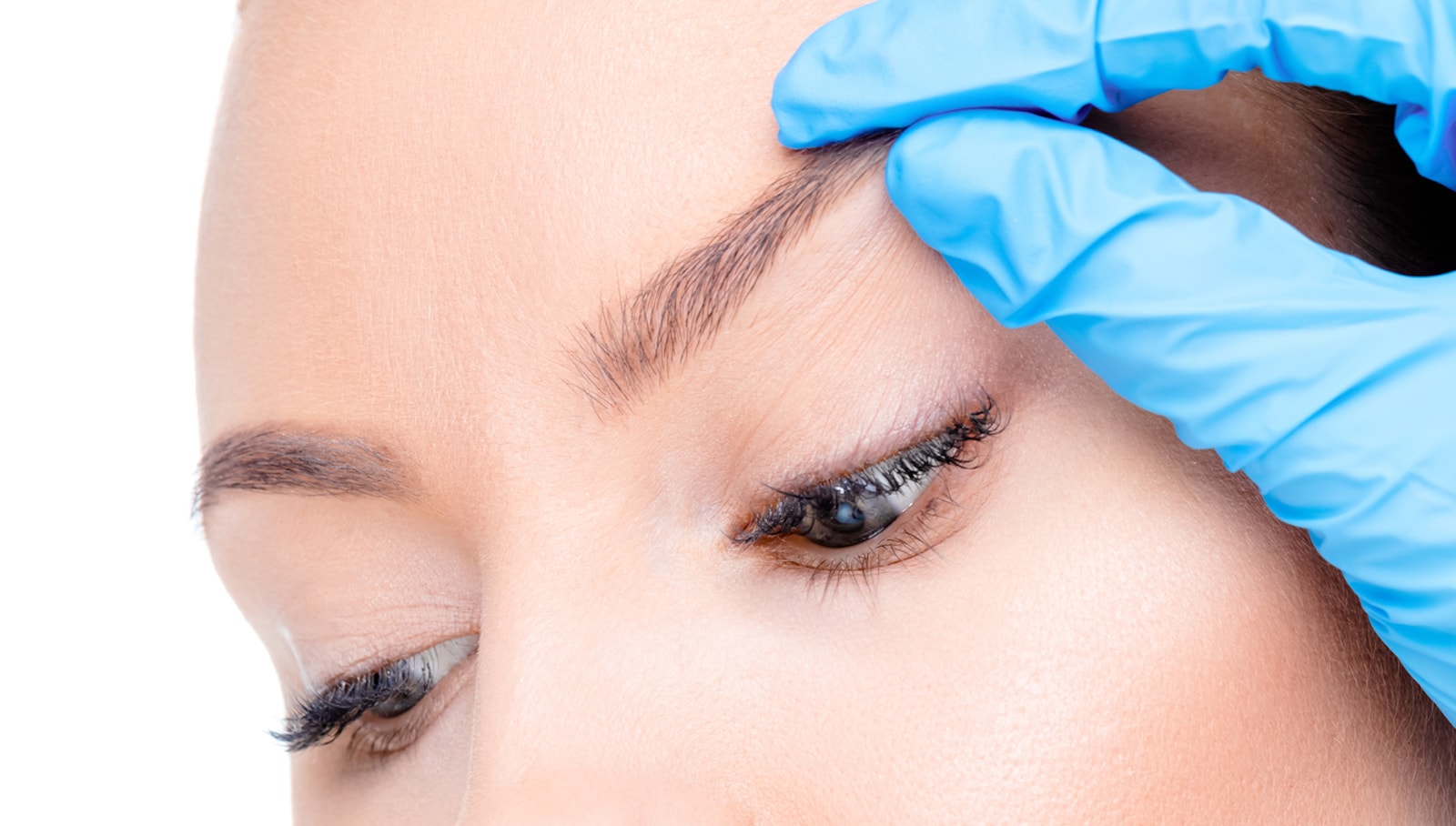
Internal and external browpexy are minimally invasive procedures performed to stabilize and lift the outer and central portions of the brow into a more youthful position. Internal and external browpexy can treat droopiness of the outer portion of the eyelid which may impair the line of vision. Performed alongside an upper blepharoplasty or eyelid surgery, the surgeon can perform internal browpexy by utilizing the same eyelid incision and placing hidden sutures to secure the brow to a higher, more desirable location. The external technique involves an incision just above or at the brow hairs to secure the brow. Therefore, a browpexy procedure is also referred to as a brow suture suspension and the suffix “Pexy” means to secure or fix.
A GOOD CANDIDATE for browpexy includes:
The following patients are NOT GOOD CANDIDATES for a browpexy:
Internal and external browpexy is usually performed as an adjunct to upper blepharoplasty to help keep the brow from lowering even further after eyelid surgery. Browpexy is an outpatient procedure performed under local or general anesthesia.
During internal browpexy, the surgeon makes an incision along the natural crease of the upper lid much like a blepharoplasty procedure. The doctor will tunnel up, from the incision to the upper boney portion of the eye socket, to reach the brow bone just below the eyebrow hair. Excess tissue and a portion of the muscle is usually removed to help elevate the area. Deep sutures are placed internally to secure the brow to the lining of the brow bone.
For external browpexy, the surgeon will make an 8mm incision just above, or at, the brow hairs. The brow is also lifted by decreasing the excess tissue and muscle. Then, the brow is fixed into place using sutures to the lining of the brow bone. During either technique, the doctor will temporarily elevate the patient to an upright position to access the new position of the eyebrows with symmetry between the two brows and the effects of gravity.
An alternative procedure is a brow lift which is also known as a forehead lift. A brow lift can treat the entire forehead and brow area, by decreasing forehead creases and baggy eyelids, for an overall facial rejuvenation of the upper 1/3 of the face. A brow lift requires three to five incisions made along the hairline to elevate the skin and muscles as a single unit. Excess tissue will be removed and the remaining tissue will be sutured into a higher, more youthful position. A brow lift is more extensive than a browpexy so patients can expect a lengthier downtime.
The cost depends on the patient’s goals, the condition of the skin, the type of browpexy performed and whether it is being performed along with blepharoplasty. When the internal browpexy is performed in conjunction with blepharoplasty, no other incisions are made. Consequently, it will be cheaper to have this procedure at the same time as eyelid surgery. In general, the cost can range from $3500 to $5000. The total cost also depends on the type of anesthesia used, the surgeon’s fees, any facility fees and the geographic location of the office. When browpexy is performed to correct vision impairment, medical insurance may cover at least a portion of the cost.
Browpexy RECOVERY is comparable to that of standard eyelid surgery. Swelling and bruising from eyelid surgery can last for approximately two weeks which is the same amount of time it takes to heal from browpexy. Patients may experience some numbness in the treatment area which should resolve during the healing phase. Tightness, tenderness or pain in the brow area is common during the first two months because the brow is secured to the lining of the brow bone. As the sutures dissolve, these side effects will subside.
Patients can return to work and normal activities after a DOWNTIME of about a week. Patients are advised to avoid strenuous activities and exercise for 2-4 weeks.
The results from internal and external browpexy may not be immediate since some swelling and bruising may obscure the initial outcome. As the swelling subsides, patients should be able to see a lifted, rejuvenated looking eyelid and brow area. The incisions located within the natural eyelid crease and the sutures inside the eyelid from the internal browpexy procedure do not produce noticeable scarring. Scarring is typically not an issue with external browpexy either due to its insignificant size and the fact that it is hidden within the brow hair. While browpexy is not considered a permanent fix, the results can last between 2-5 years (or more) depending on the patient’s anatomy. Maintaining the brow height involves several factors including:
The limitations of browpexy include:
The risks associated with a browpexy procedure include:
Internal and external browpexy can rejuvenate the upper eye and brow area by lifting it into a more aesthetically pleasing position. This type of treatment can be performed for cosmetic reasons, functional purposes or both reasons. A drooping eyelid and brow can hang heavily across the lid and possibly impair the line of vision. When considering an internal or external browpexy, it is important to choose a board-certified surgeon who performs both techniques regularly. The surgeon can help the patient determine which technique will work best to achieve the desired results.
Written by Cosmetic Town Editorial Team -SP
Based on an exclusive interview with Guy Massry, MD in Beverly Hills, CA